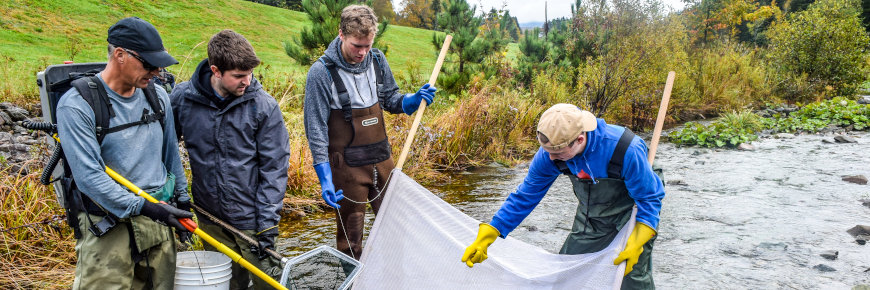
Students from the University of New Brunswick learn how to electrofish for young salmon.
Research on Atlantic salmon
Parks Canada is a world leader in science-based ecological conservation and restoration. Through its Conservation and Restoration Program, Parks Canada takes actions to preserve national parks and contribute to the recovery of species-at-risk like wild Atlantic salmon.
Parks Canada takes its mandate to protect ecological integrity very seriously and is the only national parks system in the world that has fully implemented a system-wide ecological integrity monitoring and reporting program, consisting of more than 700 independent scientific measures that inform park-specific priorities and guide investments in conservation.
Parks Canada currently has numerous Atlantic salmon research priorities and opportunities in Atlantic Canada.
Research opportunities
Parks Canada is actively working with partners to monitor and restore ecosystems, expand our knowledge of biodiversity and protect species at risk like Atlantic salmon.
Together we can make a difference!
That is why Parks Canada invites researchers, conservationists, and the stewards of tomorrow to become part of the recovery team.
The three ecological targets below represent the range of salmon research in the participating Atlantic parks. Please click on the tabs for research opportunities in the different regions. For more information, please contact Danielle.Latendresse@canada.ca.
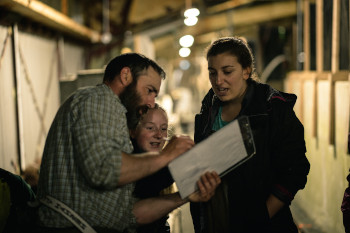
Ecological target 1: Atlantic salmon
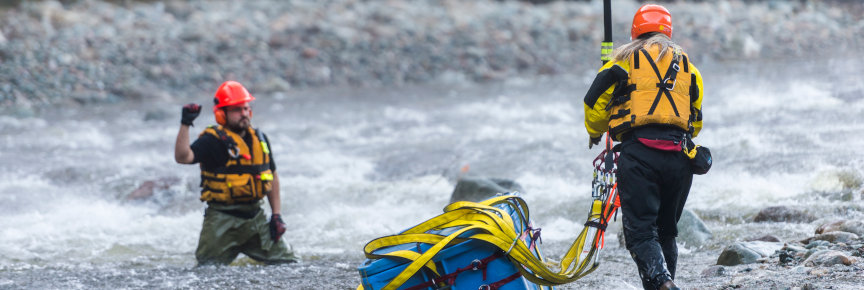
This target addresses the recovery and sustainability of Atlantic salmon.
Atlantic region
Research opportunities
- Assess population diversity and genetic variation among individuals within and between study rivers. This could include analyzing rates of loss of genetic diversity, fitness and relative captive and wild contributions to offspring parentage.
New Brunswick
Research opportunities
Kouchibouguac National Park- An examination of juvenile survival rates using appropriate methods, sites and strategies for each life stage.
- Assess population diversity and genetic variation among individuals within and between study rivers. This could include analyzing rates of loss of genetic diversity, fitness and relative captive and wild contributions to offspring parentage.
- An assessment of conservation requirements for Atlantic salmon in the Greater Kouchibouguac Ecosystem, and further, as it relates to past requirements calculations.
- Short and long term impacts of smolt-to-adult supplementation as it relates to populations or stocks where human intervention is required:
- Evaluate the reproductive success of captive-reared adults. Which could include the assessment of gamete viability and whether there is a spawning population density effect that could limit reproductive success.
- Evaluation of overall fitness measures of captive reared adults. This could include physiology, stress levels during transport and release activity; morphology, changes over time and comparisons to wild stock; maturation rates and timing; egg size; viability and fecundity.
- Assess population diversity and genetic variation among individuals within and between study rivers. This could include analyzing rates of loss of genetic diversity, fitness and relative captive and wild contributions to offspring parentage.
Nova Scotia
Research opportunities
Cape Breton Highlands National Park- Short and long term impacts of smolt-to-adult supplementation as it relates to populations or stocks where human intervention is required (fitness, juvenile densities, size-at-age, maturation timing, relative contribution of wild/captive-reared fish, degree of mixing b/w captive-reared and wild, baseline genetic diversity before supplementation vs after).
- An assessment of the river’s conservation requirements of Atlantic salmon, and further, as it relates to past requirement calculations.
- Assess supplementation viability through studying the relation and diversity of the Clyburn Brook salmon stock to salmon stocks from neighbouring river systems.
Newfoundland and Labrador
Research opportunities
Gros Morne National Park- An assessment of Trout River’s conservation requirements of Atlantic salmon, and further, as it relates to past requirements calculations.
- Short and long term impacts of smolt-to-adult supplementation as it relates to populations or stocks where human intervention is required.
- Assess population diversity and genetic variation among individuals within the study river and across nearby rivers. This could include analyzing gene flow and homing patterns within Trout River; investigating the resident population; and comparing across rivers.
- Analyze the effects of supplementation through the changes in the population’s genetic integrity, fitness and relative captive and wild contributions to offspring parentage.
- Investigate potential aquatic invasive species, their impacts on Atlantic salmon, and best monitoring and management practices to ensure ecological integrity of Trout River.
- Assess population diversity and genetic variation among individuals within and between study rivers. This could include analyzing rates of loss of genetic diversity, fitness and relative captive and wild contributions to offspring parentage.
Ecological target 2: Ecosystems
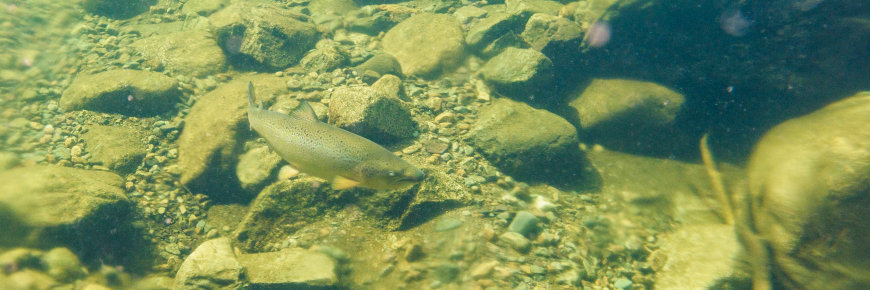
This target addresses the ecosystem and ecological processes of the freshwater watersheds and the marine ecosystem.
Atlantic region
Research opportunities
- Study the impacts of climate change on the freshwater ecosystems and Atlantic salmon habitat.
- Identification of key spawning habitat and the use of this habitat as it relates to spawning and reproductive success.
- Marine mortality: how the park rivers fit into the larger marine mortality picture.
- Environmental effects on smoltification and at sea survival, i.e. temperature effects on physiology and marine survival.
- Temporal and spatial distribution of salmon at sea to determine the locations and timing of mortality.
- Performance within the marine environment as it relates to the genetic make-up and fitness of populations of salmon within the national park sites.
New Brunswick
Research opportunities
Kouchibouguac National Park- Study the impacts of climate change on the freshwater ecosystems and Atlantic salmon habitat.
- Identification of key spawning habitat and the use of this habitat as it relates to spawning and reproductive success.
- Study the impacts of climate change on the freshwater ecosystems and Atlantic salmon habitat.
- Identification of key spawning habitat and the use of this habitat as it relates to spawning and reproductive success.
- Performance within the marine environment as it relates to the genetic make-up and fitness of inner Bay of Fundy salmon stocks within the Atlantic national parks. Are there families/treatments within our Live Gene Bank (LGB) that seem to perform better than others?
Nova Scotia
Research opportunities
Cape Breton Highlands National Park- Identification of key spawning habitat and the use of this habitat as it relates to spawning and reproductive success.
- Study the impacts of climate change on the freshwater ecosystems and Atlantic salmon habitat (identify potential thermal barriers, change-over time in days of thermal stress conditions, occurrence/timing of weather events that may destroy redds or harm juveniles).
Newfoundland and Labrador
Research opportunities
Terra Nova National Park- Study the impacts of climate change on the freshwater ecosystems and Atlantic salmon habitat.
- Identification of key spawning habitat and the use of this habitat as it relates to spawning and reproductive success.
- Assess the use of the lacustrine habitat by juveniles, precocious parr and pre-spawning adults.
- Study the impacts of climate change (e.g., stochastic events, water quality, thermal stress) on the freshwater ecosystems and Atlantic salmon habitat.
Ecological target 3: Community stewardship
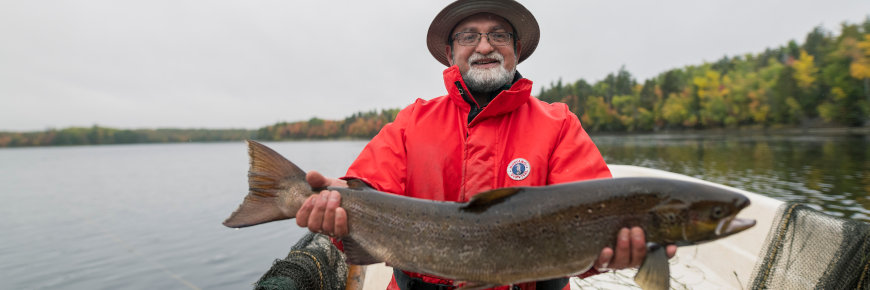
This target will address the connection between the community, Atlantic salmon and the surrounding ecosystem. Community represents the people of Atlantic Canada including specific academic, indigenous, community and industry groups.
Regional
Research opportunities
- Identify integrated cultural resources activities.
Parks Canada invites researchers to become part of the salmon recovery team. Find out about applying for a research permit in a national park.
- Date modified :
Social Sciences
Research opportunities